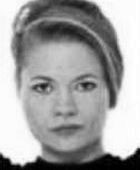
Liza Bruce
About
the designers
Liza Bruce was born in 1955 and met her husband Nicholas when she was still at school. He is a St. Martins trained British designer of furniture. Liza's father was an engineer who worked on Cadillacs and Lincolns and she is as fascinated by good car design as she is with good body design.
She started her own company in New York in 1981, after attracting attention with the sophisticated swimwear she designed for herself and her friends. Apart from innovative designs, she has also used unusual fabrics like a thick lustre crepe, and a crinkle crepe mixed with Lycra. She also uses mohair and silk/Lycra mixes.
In 1988, she expanded her range to include daywear like jackets and tunics. She makes easy-to-wear, easy-to-pack clothes which cling to the body. Do not expect to find accessories dotted around her shop, no, the Liza Bruce customer not only has a streamlined figure, but minimalist tastes.
During the mid-1990s, Bruce expanded her product line in the U.S. while maintaining her large showroom and studio in London. She opened a large showroom in New York offering more affordable swimwear and activewear, and introduced a fragrance. Bruce wanted to have a home base in the U.S. to better serve her American clients, who include Barneys, Marks & Spencer, Charivari, and Saks Fifth Avenue. Yet in 1996 Bruce went into a voluntary liquidation of her wholesale business due to several financial factors, including a long copyright dispute with Marks & Spencer and the bankruptcy of her biggest account, Barneys New York. After a few years of regrouping, Bruce opened a small retail shop in London, selling to only a few selective American clients such as Bergdorf Goodman, Neiman Marcus, Saks Fifth Avenue, and Harvey Nichols. Her new business once again features her popular swimwear, lingerie, and sportswear, and she planned to add jewelry and footwear.
Bruce's new approach of opening smaller, more intimate stores appeals to her desire to veer away from commercialism. Her new sportswear collections feature the same wearable and functional fabrics as she has used for her swimwear—modern fabrics that travel well. She has added Velcro closures to her clingy and stretchy pieces, and on some of her pieces she has haphazardly sewn in a label that reads, "Luscious Bitch."
The Look
In the eighties she was instrumental in the development of new Lycra based fabrics which she used to evolve her signature streamlined silhouette. For several seasons she worked exclusively with tubular fabrics and her preoccupation with streamlining led to her invention of leggings’ and the evolution from her swimwear collection of ‘the body’ as the basis of the emancipated wardrobe of the eighties; she was undoubtedly the undisputed queen of the Black cat-suit, and the swimsuits she designed for the Robert Mapplethorpe / Lisa Lyon shoot for British Vogue in 1984 express her determination that women should be seen as strong, athletic, emancipated and sensual; accordingly she developed a cut that accentuated the length of the leg, lifted the bust and emphasized the waist!